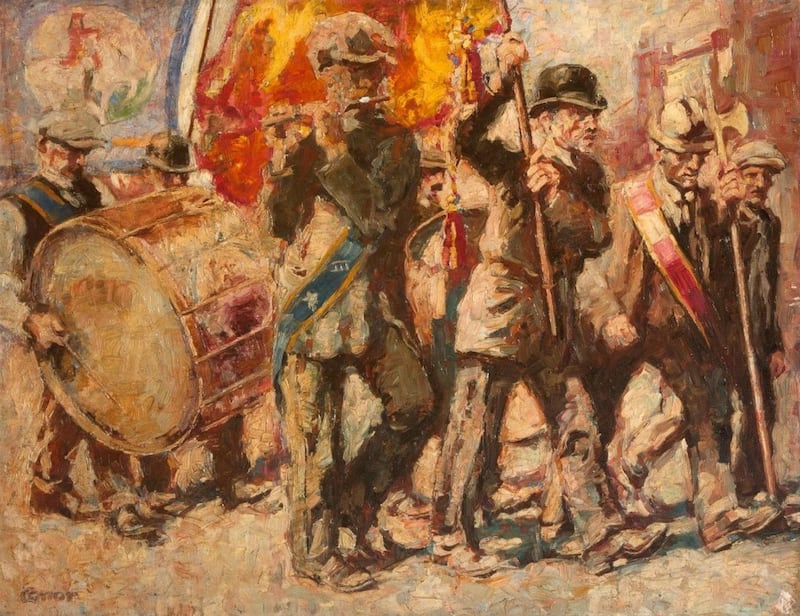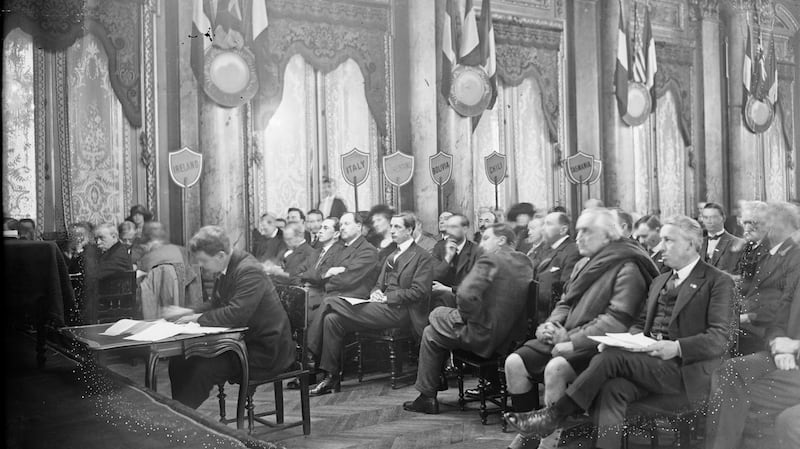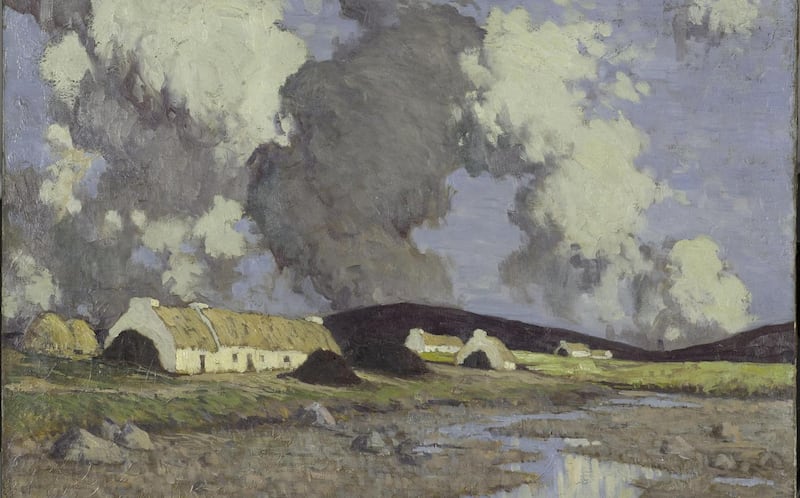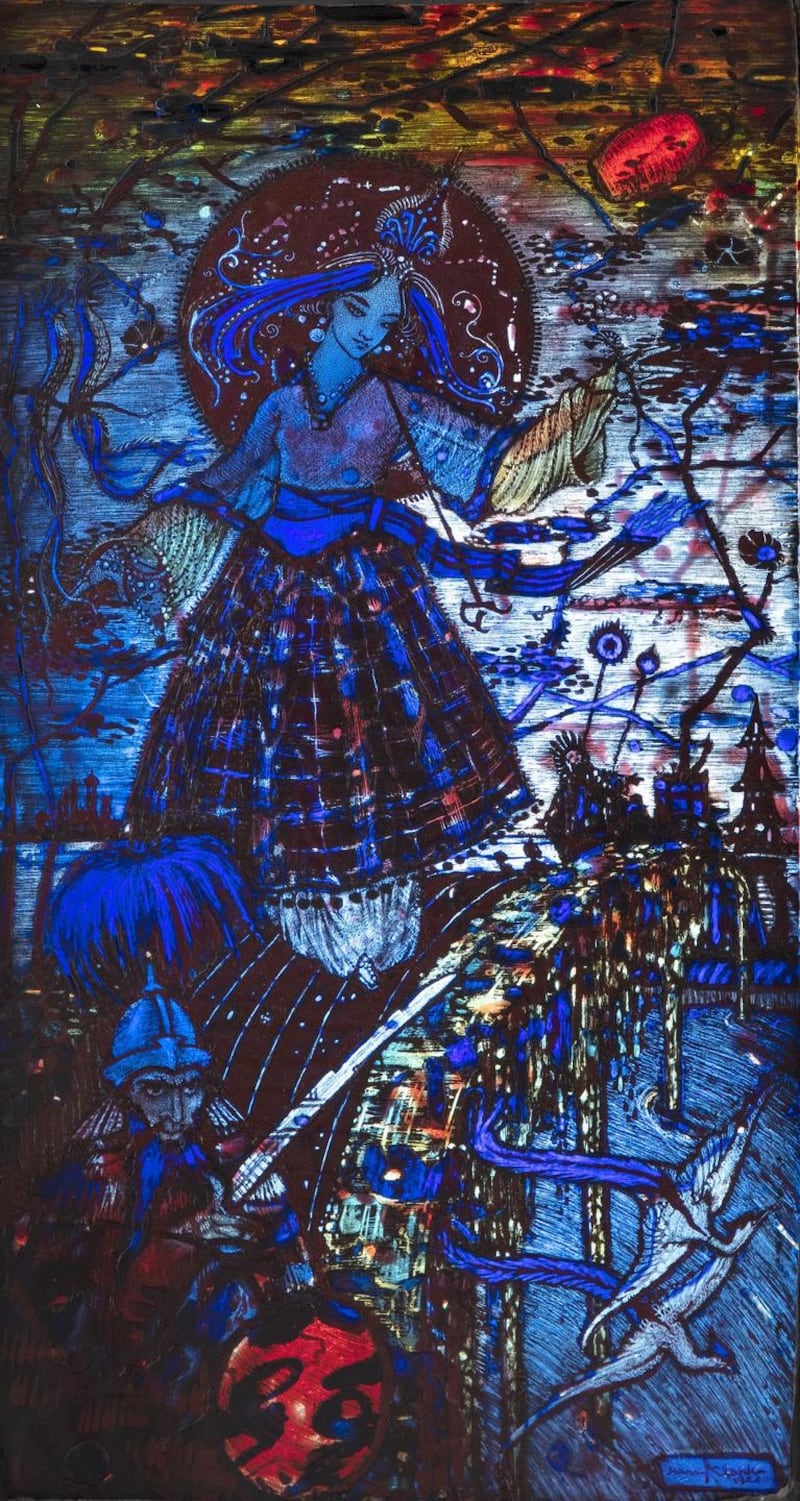In late January 1922 the cream of Irish politics, literature, music, theatre, art and design converged in Paris. James Joyce published his modernist masterpiece Ulysses. Renowned designer Eileen Gray opened her shop Jean Désert, and an event known as the World Congress of the Irish Race took place in the city. The week-long congress brought Irish delegates and an international audience together to discuss Irish affairs and establish a central diaspora organisation to co-ordinate worldwide support for the emerging State.
Associated with the congress the Irish government presented the grand narrative of Irish cultural history, with lectures on aspects of Irish life and culture, performances of plays by playwrights John M Synge and Lady Gregory, and concerts of Irish music. The centrepiece of this cultural display was a seminal exhibition of Irish art.
The Irish exhibition aimed to show the world the best of modern Irish art in a global context. It was an early deployment of soft power and cultural diplomacy
The French authorities estimated 250 people attended the congress. Approximately 100 delegates with voting rights travelled from all over the world to the political think-in and tactical display of Irish culture. Éamon de Valera described it as a chance to display Ireland's "magnificent culture, the grand things the nation could give to the world".
The centrepiece of this show was an art exhibition, mounted in a fashionable Parisian art gallery, Galerie Barbazanges, located just around the corner from Jean Désert. Barbazanges specialised in modern art, showing Picasso and Modigliani. By choosing this space the Irish exhibition aimed to show the world the best of modern Irish art in a global context. It was an early deployment of soft power and cultural diplomacy. Art was to be used as a key element of branding a postcolonial Ireland.

This Friday, January 28th, Trinity College Dublin will launch a 3D virtual recreation of this seminal exhibition developed by historians from the Department of History and Department of History of Art and Architecture in partnership with Trinity Long Room Hub Arts and Humanities Research Institute. Seeing Ireland is an ambitious digital humanities project which forms part of the Decade of Centenaries programme for 2022 and has been supported by the Department of Tourism, Culture, Arts, Gaeltacht, Sport and Media.
Immersive
Visitors to the website will be able to enjoy an immersive experience of attending the exhibition and see Ireland as it wished to be seen by the world in 1922 in a fleeting moment of unity, between the Treaty split and subsequent Civil War that dominated the narrative of that year in Irish history. Irish art and culture was something both sides could embrace.

At the time of the congress no other country had officially recognised the State. The authorities sought to present a self-defined identity and to elicit international support as it sought to take its place in the world. The Irish minister for fine arts George Noble Plunkett, in correspondence with both congress organiser Katherine Hughes and de Valera, noted the “propaganda value” of the exhibition. George Gavan Duffy, then minister for foreign affairs, wrote that the congress was “mainly of a cultural and artistic character” and he thought that it was wise to send a delegation representing Ireland that would endeavour to “avoid party politics”. He invited de Valera and Eoin MacNeill to each lead an official delegation of five representing the country.
Other delegates included Countess Markievicz, Mary McSwiney, Harry Boland, Sean T O’Kelly and Douglas Hyde, who delivered a lecture to attendees on the Irish language. William Butler Yeats lectured on Irish literature and his brother Jack, in his one and only public lecture, spoke on modern Irish art. Speakers included MacNeill on Irish history, Arthur Darley on music and Evelyn Gleeson on Irish design. Other presentations were on economics, religion, sport and agriculture. These topics were chosen to represent the pre-Civil War pillars on which the new administration planned to build the State.
Two evenings of Irish music on the theme of Irish struggles for independence consisted of ballads, hymns and airs played on a range of traditional Irish musical instruments
Echoing the leitmotif of the congress, the lectures and other cultural presentations were nationalist in tone. They sought to present a unique and distinct identity and to create a cultural separation from England. Culture and art paralleled the political.
Two evenings of Irish music on the theme of Irish struggles for independence consisted of ballads, hymns and various airs played on a range of traditional Irish musical instruments, such as the fiddle, flute and whistle. These concerts were staged in the Salle de Fêtes at the Hôtel Continental. In his lecture, Darley, organiser of the musical evenings, reinforced the nationalistic aspirations of the concerts and declared that Ireland never bowed to a conqueror and after centuries of suffering and persecution still "gloriously preserved" her life and music and after independence "she will once more be the land of song".
Exhibition
The opening of an exhibition of Irish visual art and arts and crafts at the Galerie Barbazanges on Saturday January 28th, 1922 was the major cultural event of the congress. This show remained open to the public for one month and cost one-third of the budget of the entire event at approximately £2,000.
A total of 94 mostly contemporary Irish artists, craftspeople and individual societies from all four provinces showed 281 exhibits. Divided into more than 20 different categories, the show included the very best of contemporary Irish art and craft. The range of work exhibited is staggering: oil painting, sculpture, fine art prints, pottery, enamels, designs, stained glass, watercolours, illuminations, book bindings, printing and textiles. Presented in Paris, the art capital of the world, the display was a bold and impressive statement regarding the range, scale and quality of the contemporary visual art and artistic industries being produced. This exhibition established much of the canon of Irish artists and art works that we still revere today – artists as diverse as Sean Keating, Mary Swanzy, Sara Purser and John Lavery.

The well-known French critic Arsène Alexandre wrote the exhibition catalogue essay. He identified the show as the first outing of the Irish School of Art and, like Jack Yeats in his lecture, saw Irish landscape as central to it. The French government purchased a Paul Henry painting in the only known sale associated with the exhibition, a major diplomatic coup for the Irish State as the purchase was an implicit recognition of the congress. Henry’s painting, Un village de l’ouest de l’Irlande, was a classic West of Ireland scene and is now in the collection of the Musée National d’Art Moderne at the Centre Georges Pompidou in Paris. This purchase authenticated Irish art and identity, and its recognition helped to achieve the “propaganda value” so keenly sought by the organisers.
Jack Yeats exhibited some paintings and numerous Cuala Press prints – a collection of which are held in the library of Trinity College Dublin – of the west showing a proud and distinctive people in their own place. He also exhibited Bachelor’s Walk, In Memory, permanently acquired by the National Gallery in 2021. Yeats waited seven years to exhibit this work, completed in 1915, for the first time. It was one of his few overtly political pieces. The destiny of Ireland, however imperfect, was beginning to unfold from its recent troubles and the 1915 painting referenced this turmoil in the same way that his brother’s poetry did.
Statesmanlike
The organisers of the exhibition were particularly keen to have John Lavery's "Pictures of modern Irish history" – some of which are currently on display at the National Museum of Ireland in Collins Barracks. His statesmanlike portraits of de Valera and the Treaty delegates featured alongside Sadhbh Trinseach's portrait of Eoin MacNeill. Their presentation as heroic and solemn was seen as an important riposte to the cliched colonial narrative of a nation incapable of self-government.
Countess Markievicz, a prominent delegate and an exhibited artist, urged the congress to counteract the negative stereotypes of Irish people in the British media
The exhibition also featured Lavery's painting of the funeral of the nationalist martyr Terence McSwiney, lord mayor of Cork. It referenced past English atrocities and his Blessing the Colours depicted the alliance of the Catholic Church and the State at this critical juncture in Ireland's history. It is a reminder that some of the Ireland envisioned in 1922 was to come to pass.
Countess Markievicz, who was both a prominent delegate at the congress and an exhibited artist, was represented by six works at the exhibition. She urged the congress to counteract the negative stereotypes of Irish people presented in the British media. Many of the art works showed a proud, industrious and independent people in distinctive scenes drawn from Irish life. Sarah Purser's Le Petit Déjeuner, painted in Paris, made a direct connection between Ireland and the city. Despite the realities of the political landscape after the War of Independence, the Paris art exhibition displayed work by artists from all parts of the island, reflected all traditions, and indicated an aspiration that art and culture would not be partitioned even as it became clearer that the island would. Paintings of Northern landscapes and an Orange procession were included. These were themes that were censored from another international exhibition of Irish art staged by the government in Chicago just 10 years later.

The arts and crafts section presented itself as part of a continuum from Irish medieval art. The quality of the exhibits highlighted the strength of Irish metalwork, enamelling, bookbinding, printing and textiles. Irish stained glass, in particular, had gained an international reputation at this time through exhibitors Harry Clarke, An Túr Gloine, Wilhelmina Geddes and Michael Healy. All glass works bar one Clarke were religious and reinforced Catholicism as a mark of national distinctiveness.
The Seeing Ireland digital recreation of the exhibition offers a view of Ireland in 1922 through a cultural rather than a military lens and will go live on Friday January 28th – 100 years after Exposition d’Art Irlandais opened in Paris and put the Irish State on display before the world.
Dr Billy Shortall is Ryan Gallagher Kennedy Research Fellow, TRIARC. Dr Ciaran O’Neill is Ussher Associate Professor in 19th-Century History, Trinity College Dublin.
An event to launch the project, Seeing Ireland Launch: Art, Culture and Power in Paris, 1922, will take place online at the Trinity Long Room Hub Arts and Humanities Research Institute on January 28th. Attendance is free but registration is required.











